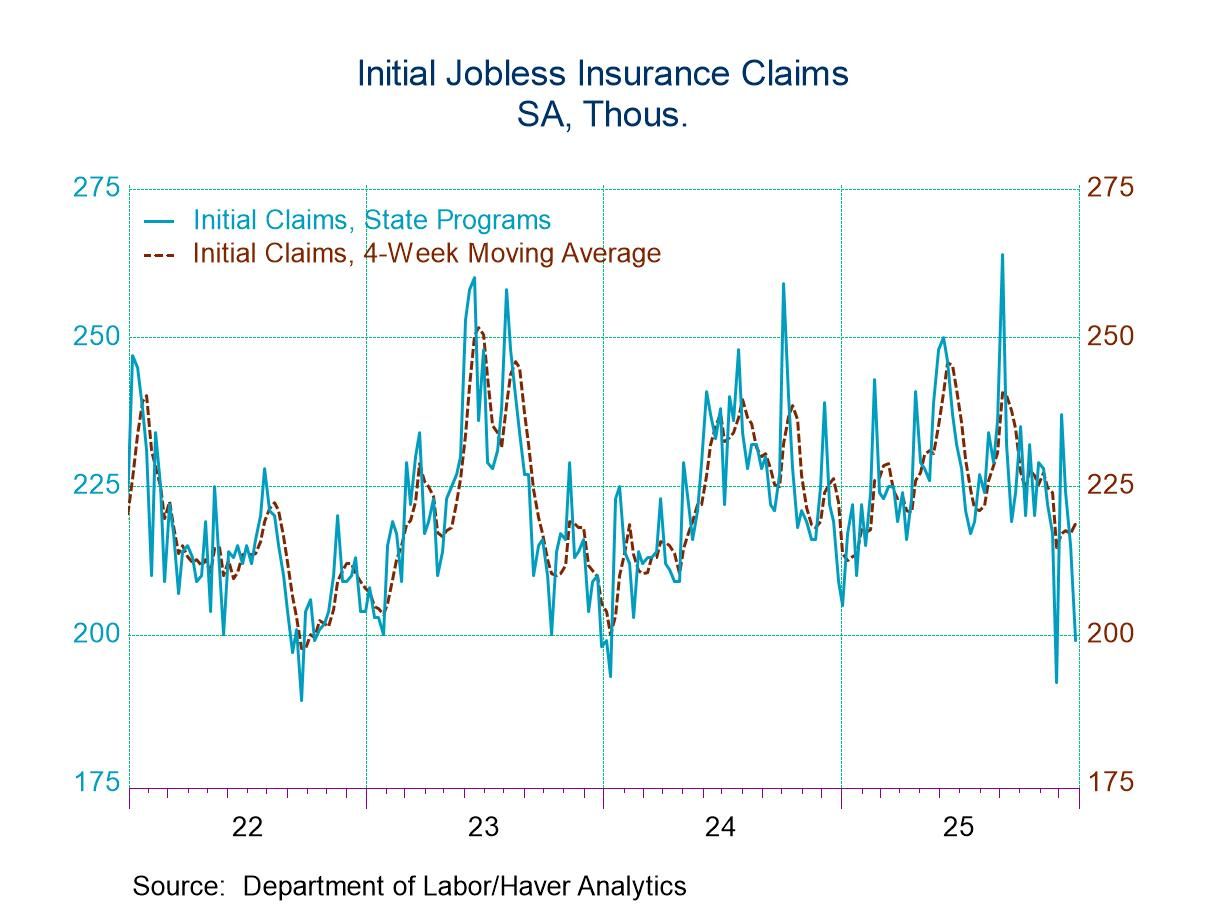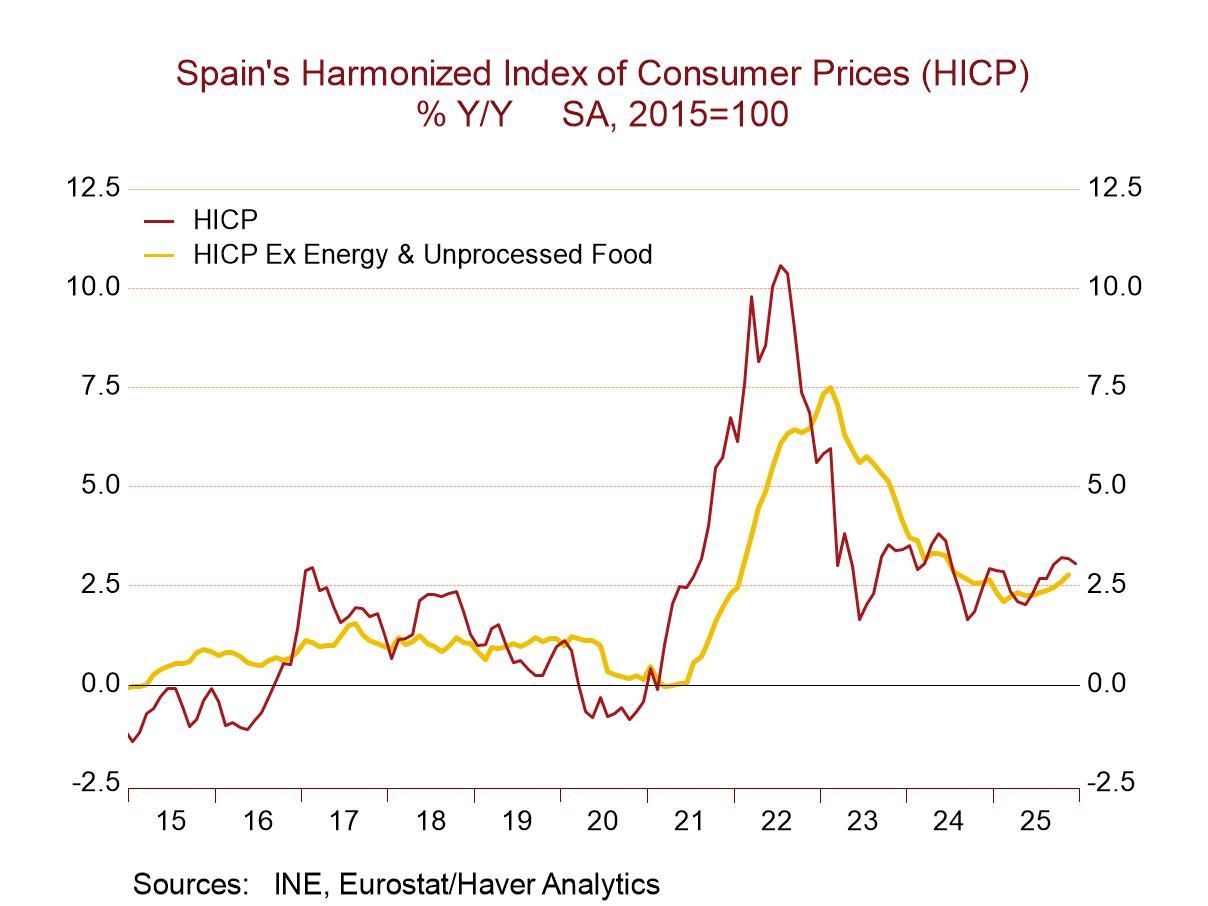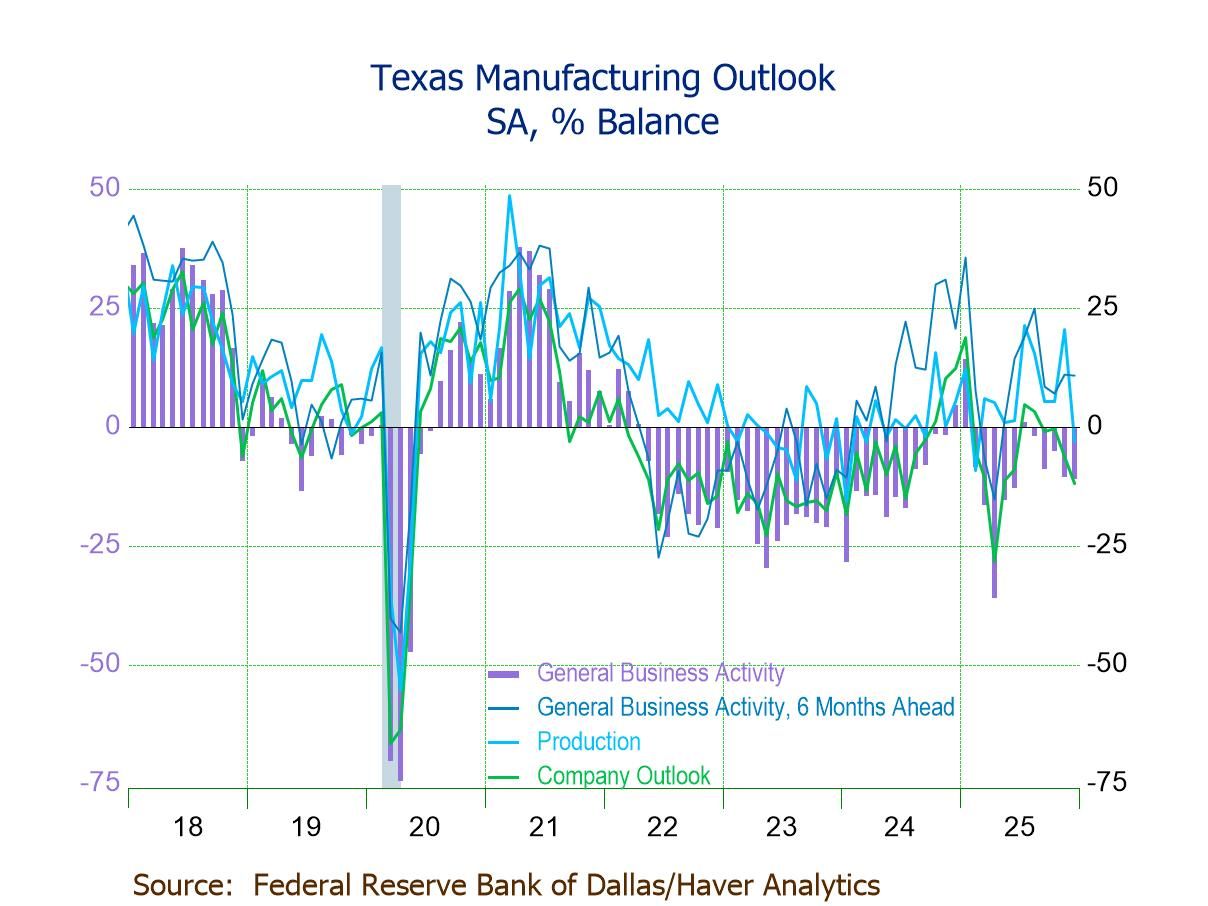 Global| Mar 28 2005
Global| Mar 28 2005U.S. Liquidity Growth Fell As Interest Rates Rose
by:Tom Moeller
|in:Economy in Brief
Summary
For nearly a year, the Federal Open Market Committee has been targeting a higher level for the Fed funds rate. The latest action lifted the rate to 2.75% versus 1.0% in late June of 2004. These actions have been geared to slowing the [...]
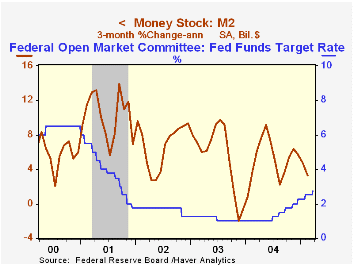
For nearly a year, the Federal Open Market Committee has been targeting a higher level for the Fed funds rate. The latest action lifted the rate to 2.75% versus 1.0% in late June of 2004.
These actions have been geared to slowing the growth of U.S. money & liquidity in order to contain inflationary pressure. Success is evidenced by substantially reduced three-month growth in several monetary aggregates. Growth in narrowly defined money (MZM) was slightly negative in February versus 7.9% growth last June. M2 growth more than halved to 3.3% and growth in adjusted bank reserves fell to 3.3% from 5.9%.
Further evidence of success is noted by "market based" indicators of monetary policy. The slope of the yield curve between Fed funds and the 10 Year Treasury note now is about half its level last June. The foreign exchange value of the US dollar is up 2.0% from its low, though the value against major currencies still is down versus last year. Finally, while industrial commodity prices still are rising, y/y growth including oil has fallen to 5.3% from over 20% last year. 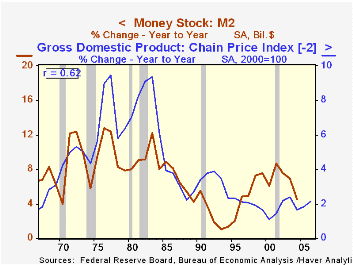
The relationship between money growth and U.S. price inflation has been maligned due to a breakdown during the 1990s. During all of the last thirty years the correlation between annual growth in M2 and the GDP price index two years later has been 62%, but until ten years ago the correlation was over 80%. (These correlations rank high relative to prices' correlation with liquidity or narrow money.)
The Logic of Monetary Policy from Federal Reserve Board Governor Ben S. Bernanke is available here. 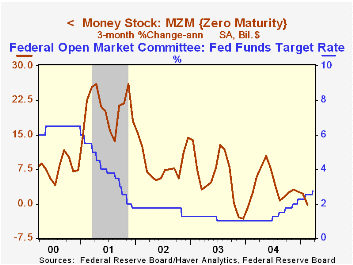
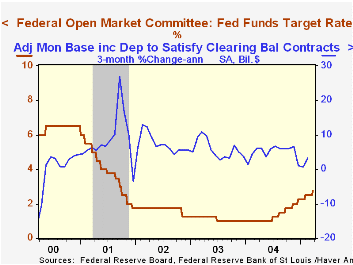
| Money & Liquidity | Feb 3 Mth % (AR) | Jan 3 Mth % (AR) | Y/Y | 2004 | 2003 | 2002 |
|---|---|---|---|---|---|---|
| MZM | -0.2% | 2.2% | 3.4% | 3.9% | 7.4% | 12.8% |
| M2 | 3.3% | 4.8% | 5.2% | 4.5% | 6.9% | 7.6% |
| Adjusted Monetary Base | 3.3% | 0.7% | 4.9% | 4.8% | 6.3% | 8.7% |
by Louise Curley March 28, 2005
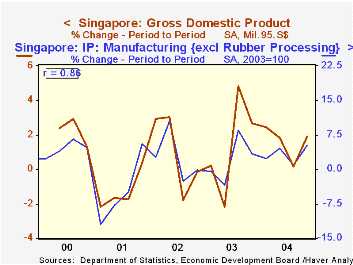
The seasonally adjusted index of Industrial production in Singapore declined 9.8% in February after a 6.9% decline in January. Some of the February decline may have been due to the plant shutdowns during the lunar year celebrations that occurred early in the month. However, the close correlation between the quarterly average of the industrial product index and real gross domestic product (see the first chart) suggests that the trend of industrial production so far this year may lead to a slow advance or even decline in the first quarter GDP, the first estimate of which is scheduled for April 12th. In the first quarter of 2004, a 2.8% increase in industrial production was associated with a 2.4% increase in GDP.
The Economic Development Board of Singapore publishes a seasonally adjusted index only for total industrial product. The EDB publishes unadjusted data for seven "clusters" of manufacturing businesses and their components. Haver seasonally adjusts all the indexes for the economic clusters and their components except the indexes for the Biomedical Manufacturing Cluster and its Pharmaceutical component. In the table below we have used Haver's seasonally adjusted data, except for the Biomedical manufacturing cluster. Also included in the table is the unadjusted index for electronics which we use in the second chart.
On a seasonally adjusted basis, the indexes for the electronics and the transport clusters were the only ones to show a gain in February. The index for the precision engineering cluster was virtually unchanged while the indexes for the chemical, general manufacturing and biomedical manufacturing clusters all declined. The biomedical manufacturing index has been extremely erratic as pharmaceutical makers tend to switch the emphasis on certain drugs and have to shut down plants for changeovers. Also there has been considerable expansion in this cluster as the government has been encouraging the biomedical industry as a means of reducing Singapore's reliance on the electronics industry where growth has been slowing. The second chart compares the unadjusted indexes the electronics and biomedical clusters. Although erratic, the latter shows an upward trend while the former shows a more stable trend.
| Singapore: Manufacturing Clusters | Feb 05 | Jan 05 | Feb 04 | M/M% | Y/Y% | 2004 | 2003 | 2002 |
|---|---|---|---|---|---|---|---|---|
| Electronics | 117.2 | 114.1 | 120.0 | 2.8 | -2.3 | 14.8 | 4.5 | 5.2 |
| Chemicals | 109.2 | 112.8 | 107.9 | -3.2 | 1.2 | 7.91 | 6.49 | 11.1 |
| Precisions Engineering | 106.2 | 106.3 | 122.2 | -0.1 | -13.1 | 2.86 | -0.7 | 2.0 |
| Transport Engineering | 140.8 | 138.3 | 111.1 | 1.8 | 26.7 | 24.0 | -6.0 | 8.9 |
| General Manufacturing Ind | 94.2 | 98.9 | 106.4 | -4.8 | -11.5 | -0.1 | -3.6 | -6.9 |
| Biomedical Mfg (NAS) | 42.2 | 173.3 | 116.1 | -75.6 | -63.6 | 29.8 | 13.4 | 48.6 |
| Total Industrial Production | 107.8 | 119.5 | 108.8 | -9.8 | -0.92 | 13.94 | 3.06 | 8.42 |
| Addendum: | ||||||||
| Electronics (NSA) | 97.9 | 110.0 | 100.3 | -11.0 | -2.39 | 14.8 | 4.5 | 5.2 |
Tom Moeller
AuthorMore in Author Profile »Prior to joining Haver Analytics in 2000, Mr. Moeller worked as the Economist at Chancellor Capital Management from 1985 to 1999. There, he developed comprehensive economic forecasts and interpreted economic data for equity and fixed income portfolio managers. Also at Chancellor, Mr. Moeller worked as an equity analyst and was responsible for researching and rating companies in the economically sensitive automobile and housing industries for investment in Chancellor’s equity portfolio. Prior to joining Chancellor, Mr. Moeller was an Economist at Citibank from 1979 to 1984. He also analyzed pricing behavior in the metals industry for the Council on Wage and Price Stability in Washington, D.C. In 1999, Mr. Moeller received the award for most accurate forecast from the Forecasters' Club of New York. From 1990 to 1992 he was President of the New York Association for Business Economists. Mr. Moeller earned an M.B.A. in Finance from Fordham University, where he graduated in 1987. He holds a Bachelor of Arts in Economics from George Washington University.



